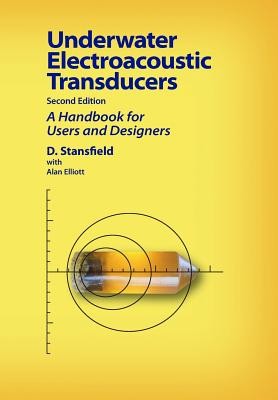
- We will send in 10–14 business days.
- Author: Dennis Stansfield
- Publisher: Peninsula Publishing
- ISBN-10: 0932146317
- ISBN-13: 9780932146311
- Format: 17 x 24.4 x 2.4 cm, softcover
- Language: English
- SAVE -10% with code: EXTRA
Reviews
Description
Underwater Electroacoustic Transducers is a practical handbook for users and designers of underwater transducers. This book continues to be a primary authoritative text in the field since first published by the Bath University Press in 1991. It is now more than 25 years since the original edition of this book was written and much work, aimed at new applications and the development and use of new materials, has been carried out since that time. Indeed, while the fundamental principles of underwater transducer design have remained unchanged in those subsequent years and, hence, the main body of the book remains as before, a new Chapter 13 was added to reflect the considerable work on the development and use of piezoelectric single crystals that has transpired. Further, Chapter 12 (New Materials and Concepts) was also updated to inform us of the research on the development and use of lead-free materials in response to the increased interest in reducing the use of lead in the environment.
The main body of this book addresses underwater transducer design methods. They are discussed and illustrated by concentrating on the design of piezoelectric transducers in the 2 - 20 kHz range, most commonly used in today's sonar systems. Design of sonar transducers at lower frequencies is also discussed. Treatment is down-to-earth and avoids complex mathematics. For the user: the book discusses the main features of the various types of transducer designs, identifies the important requirements, and assists in the drawing up of realistic specifications. For the designer: the book details the theoretical and practical aspects in developing your design to most effectively suit the application and the requirements specified by the user.
EXTRA 10 % discount with code: EXTRA
The promotion ends in 19d.23:20:47
The discount code is valid when purchasing from 10 €. Discounts do not stack.
- Author: Dennis Stansfield
- Publisher: Peninsula Publishing
- ISBN-10: 0932146317
- ISBN-13: 9780932146311
- Format: 17 x 24.4 x 2.4 cm, softcover
- Language: English English
Underwater Electroacoustic Transducers is a practical handbook for users and designers of underwater transducers. This book continues to be a primary authoritative text in the field since first published by the Bath University Press in 1991. It is now more than 25 years since the original edition of this book was written and much work, aimed at new applications and the development and use of new materials, has been carried out since that time. Indeed, while the fundamental principles of underwater transducer design have remained unchanged in those subsequent years and, hence, the main body of the book remains as before, a new Chapter 13 was added to reflect the considerable work on the development and use of piezoelectric single crystals that has transpired. Further, Chapter 12 (New Materials and Concepts) was also updated to inform us of the research on the development and use of lead-free materials in response to the increased interest in reducing the use of lead in the environment.
The main body of this book addresses underwater transducer design methods. They are discussed and illustrated by concentrating on the design of piezoelectric transducers in the 2 - 20 kHz range, most commonly used in today's sonar systems. Design of sonar transducers at lower frequencies is also discussed. Treatment is down-to-earth and avoids complex mathematics. For the user: the book discusses the main features of the various types of transducer designs, identifies the important requirements, and assists in the drawing up of realistic specifications. For the designer: the book details the theoretical and practical aspects in developing your design to most effectively suit the application and the requirements specified by the user.


Reviews